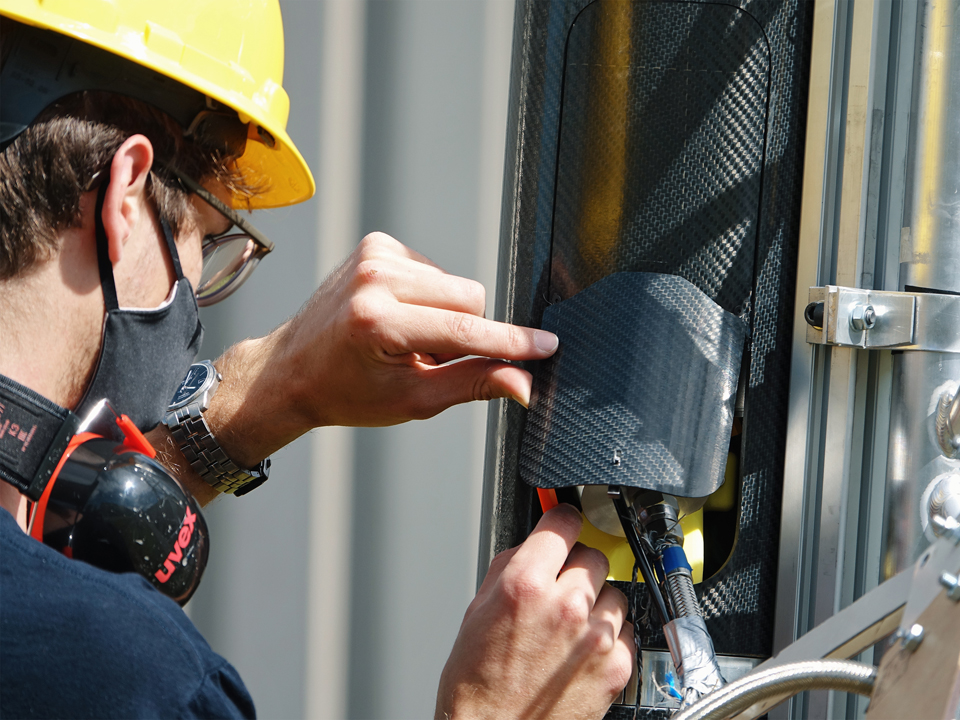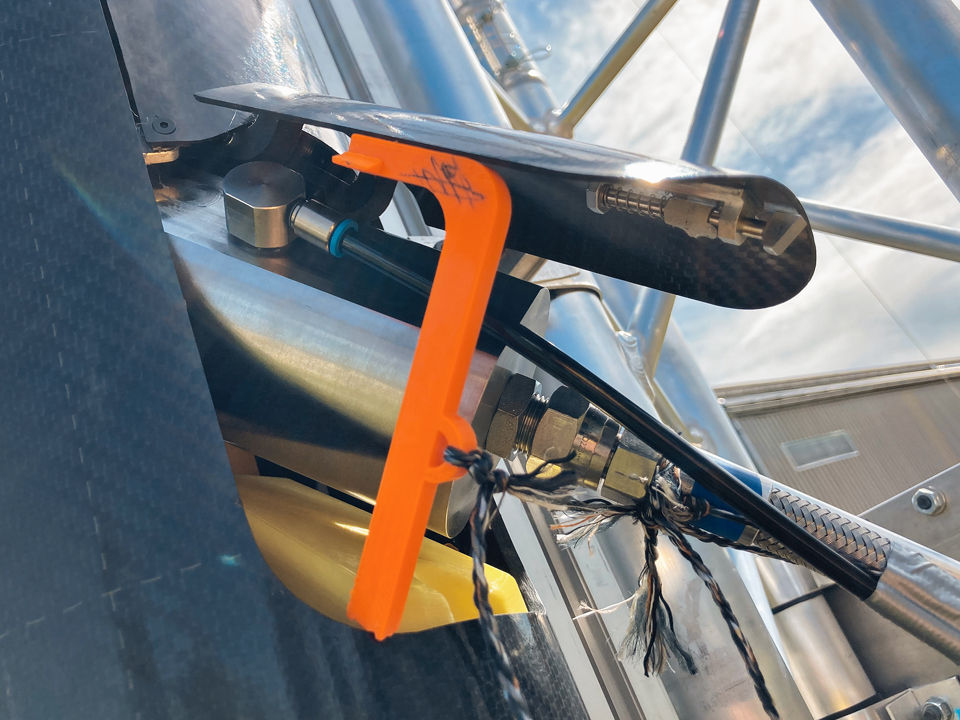Taking student rocketry to new heights
With their hybrid rocket, student project PICCARD reaches an altitude of over 6 kilometers and sets a new world record. For the construction of their winning rocket, the team relied on various 3D printing technologies such as Selective Laser Sintering.
A maiden launch to remember


Building a rocket in under a year
An advanced coupling mechanism
As a structural engineer Samuel was responsible for developing a new coupling mechanism, which is required to combine the rocket’s various segments. Once the rocket is set up and its tank is filled, the filling nozzle is retracted just before launch. «Because we didn’t want there to be a hole in the side of the rocket, I developed a hatch that closes automatically when the filling nozzle is removed», Samuel explains. This hatch is one of the elements that the students realized with the help of 3D printing technologies.

A laser sintered hatch hinge
To quickly develop and test their designs, team PICCARD relied on FDM prototypes. For more demanding structural parts, such as the hatch hinge, Selective Laser Sintering (SLS) was the better solution. «SLS can be used very well in aerospace, because it allows for very light components and for several functions to be integrated into one part», Samuel points out. Sintratec subsequently produced and sponsored the required PA12 nylon parts. According to Samuel, «the material properties of the Sintratec parts are (almost) isotropic and have a better temperature resistance than our FDM printers» – a key benefit when it comes to the extreme conditions in which these parts have to perform.
Once the parts were combined with the hatch, the mechanism worked as planned and provided a smooth rocket fairing during lift-off. «This made sure that our rocket didn’t melt away in the sun and therefore contributed to the successful launch we had in October», Samuel summarizes.


Once assembled, the 3D printed hinge mechanism and the hatch were fixed onto the rocket’s hull and thoroughly tested. Image source: ARIS.
“SLS is well suited for aerospace, because it allows for very light components and for several functions to be integrated into one part.”




